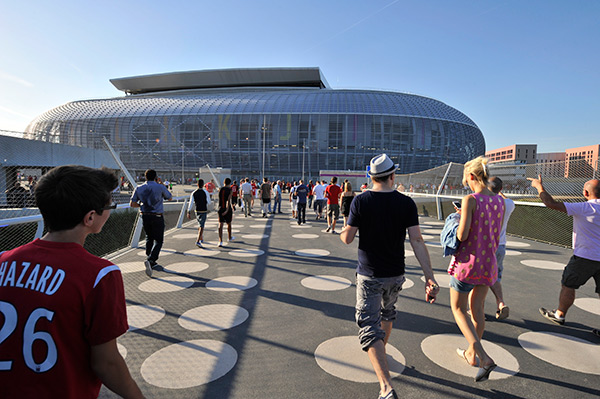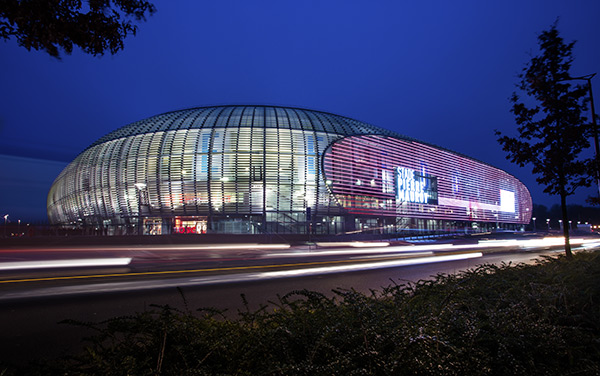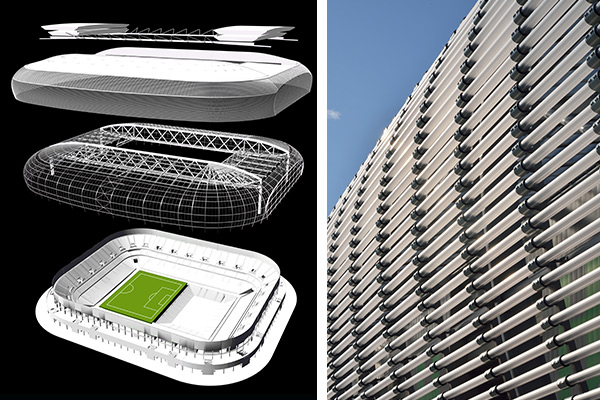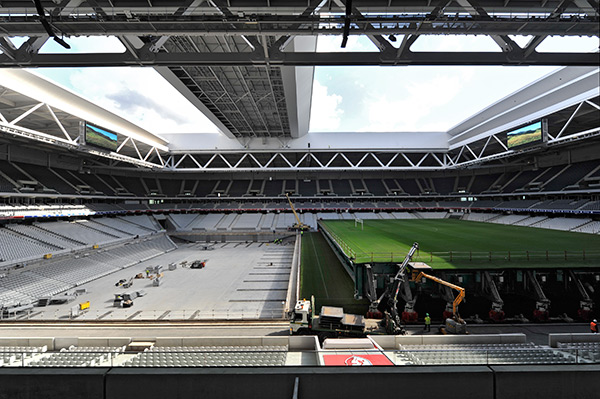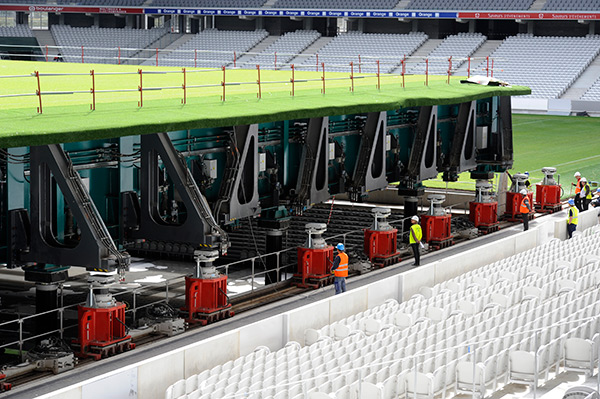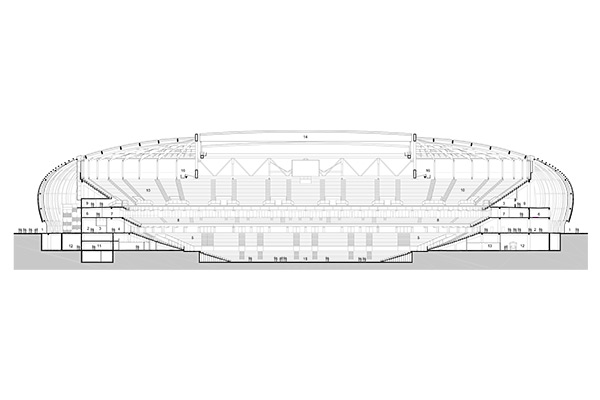An architectural review of the home stadium to LOSC Lille Métropole, the Stade Pierre-Mauroy
A sophisticated, multi-functional steel structure achieving several technical feats
Last June thousands of football fans from all over Europe converged on Lille’s new stadium to watch a number of UEFA cup fixtures. This venue which seats over 50 000 spectators was designed by the Paris- based architectural practice Valode & Pistre together with Atelier Ferret Architectures, a practice specialized in sports facilities. It was first launched in August 2012. To make the stadium more cost- effective one of the essential requirements was that this new facility should be multipurpose to host not only football matches but also other indoor sports tournaments as well as other cultural events. Both steel and powder coated aluminium play a large part in its bold elliptical design.
The new venue has become a major landmark in the suburban new town of Villeneuve d’Ascq situated some 10 kilometers outside Lille. It was built in an easily accessible location close to the main ring road and within walking distance from the nearest metro station. A lower basement level was embedded into the ground to form the concrete base of the building as well as providing large underground premises which are not accessible to the public such as the changing rooms. This reduces the height of the building to 38 m so that it fits into the surrounding urban fabric and doesn’t look too gigantic. It also allows to free up on the ground level a vast circular pedestrian avenue with striking views giving onto the pitch that measures no less than one hectare!
Magical effect of a transparent exterior skin
Whereas most stadiums are surrounded by a sealed perimeter to control access in and out of the building here the architects have used the outer skin to act as an enclosure except that thanks to the transparent materials they specified it is as a see-through barrier. The curved exterior of the building is made up 32 km of hollow extruded polycarbonate tubes with a diameter of 21 cm assembled on powder coated aluminium parts that have been moulded. The spacing of the tubes gradually increases as you move up the façade so that the aspect of the façade changes constantly at different hours of the day and seasons. During daytime, the shining aspect of the polycarbonate tubes transforms it into a huge polished pebble. At night, the stadium floodlights transform it into a great magic lantern as if by magic! This outer skin is supported by a framework of 85 thin curved steel arches that span from the base of the building right up to the roof-top and rhythm the building. The arches are made in different shades of grey so that the only coloured elements are the green pitch and the red LED strip lighting signage above the main entrance.
Left – Showing the layers and the aluminium skin of the Lille stadium
Right – The polycarbonate tubes making up the skin of the exterior of the stadium
An amazing steel structure to support the retractable roof
In just fifteen minutes the highly technical retractable roof opens and shuts lengthways in two halves. Each half consists of two “stacked roofs” which are stored one on top of the other in the open position. Each section of the roof is 80 meters long by 35 meters wide. The four parts of the retractable roof slide over two massive steel beams across the length pitch. Each of these powerful steel beams measures 205 meters long by 16.5 meters high. They are a tribute to the steel-making heritage of the region. This stacking device is a real technical innovation: up until now, retractable roof covers were designed in two halves, each consisting of a single roof. The totally smooth white PVC roof cover creates a sleek envelope that blends into the stadium’s overall design. The roof cover also meets stringent acoustic requirements so that, despite the size of the building, it is possible to organise high-quality entertainment.
A movable pitch surface hides an underground sports arena
The architects came up with the idea of concealing an arena with 7,000 additional places under the northern half of the pitch. The grass pitch surface rests on a huge steel structure that can be raised by 6 meters with hydraulic lift cylinders. Then, using massive rail tracks, the retractable half pitch slides over the southern half of the pitch in three hours to uncover an extra arena below with a seating capacity that can vary from 6,900 to 30,000 seats. This arena located below the grass pitch can host indoor sport championships (tennis, fencing, gymnastics…) as well as concerts. A black velvet curtain fixed on to moving beams is hoisted by cables up to the roof to isolate the southern part of the stadium from the northern part. In the concert disposition a stage measuring 40 x 20 m can be installed. The Grand Stade de Lille Métropole is therefore a multipurpose facility that can be used either as a stadium, an arena or a concert hall. The building also meets sustainable design requirements by incorporating renewable energy sources (solar panels and two windmills), a heat recovery unit, a rainwater recovery unit to water the pitch and many other green building options.
Project data
| Contracting authority | LMCU (Communauté urbaine de Lille) |
| Investor | ELISA (Eiffage) |
| Architects | Valode & Pistre Architectes / Atelier Ferret Architectures |
| Building contractor | Eiffage TP |
| Steelwork contractor | Eiffage Construction Métallique |
| Electrical engineering | Forclum |
| Steel engineering | ARCORA |
| Concrete structure | OTH Nord – Groupe IOSIS |
| Acoustics | Peutz / SIM |
| Lighting | Concepto |
| Sustainable design | Elioth/IOSIS |
Gros floor area: 74,000 m2
Seating capacity: 7,500 – 50,000
Cost: 324 million euros
